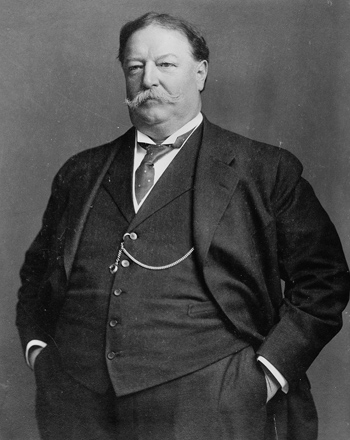The Thirteenth Census: Census Day was April 15, 1910.

Authorizing Legislation
Legislation for the 1910 census was introduced initially in December 1907, but was not enacted into law until July 1909. The delay resulted from a disagreement over the appointment of enumerators, with President Theodore Roosevelt insisting that they be hired through the civil service system and Congress seeking to retain them as patronage positions, as had been traditional. Roosevelt won this fight.
One new feature of the 1910 act was that it changed Census Day from June 1st, which it had been since 1830, to April 15. The director of the Census Bureau suggested this adjustment, because he felt that much of the urban population would be absent from their homes on summer vacations in June.
The act also did away with vital statistics inquiries on the questionnaire, but added questions about mines and quarries. A month before the census, an amendment to the act required an additional question on nationality or mother tongue of foreign-born persons and their parents. Because the questionnaires had already been printed, enumerators were instructed to add this information to column 12 (birthplace) of the form.
The enabling legislation for the 1910 census authorized funds for the newly established permanent Census Bureau to expand its permanent workforce and specifically created several new full-time positions, including that of a geographer, a chief statistician, and an assistant director. The assistant director, appointed by the president with the advice and consent of the Senate, was to be an experienced practical statistician. All non-presidentially-appointed census employees were hired on the basis of their scores in open, competitive examinations, administered throughout the country by the Civil Service Commission.
Enumeration
For the first time, enumerators in the large cities distributed questionnaires in advance, a day or two prior to April 15, so that people could become familiar with the questions and have time to prepare their answers. In practice, only a small portion of the population filled out their questionnaires before the enumerator visit, however. The law gave census takers two weeks to complete their work in cities of 5,000 inhabitants or more while enumerators in smaller and rural areas were allotted 30 days to complete their task.
Crises and Controversies
Difficulties with the tabulation process continued despite the presence of automatic counting machinery introduced in the most recent censuses. Correcting these problems delayed publication of some population numbers. Some census results, such as the total population of cities, were issued first as brief press releases, but were expanded into bulletins and abstracts that appeared as long as a year before the final reports were published.
Intercensal Activity
When the United States entered World War I in 1917, the Census Bureau took on an important new role. During the nation’s mobilization for the war, the Census Bureau was able to use its compiled population and economic data to report on populations of draft-age men, along with the different states’ industrial capacities.
Further Information
- A wide variety of historical statistics from this and other decades is available in Historical Statistics of the United States: Colonial Times to 1970. It is available as a PDF [74.4MB] or 2-part ZIP file: Part I [52.2MB] | Part II [66.1MB].
- Reports and statistics from the 1910 Census
Information provided from Census.gov

